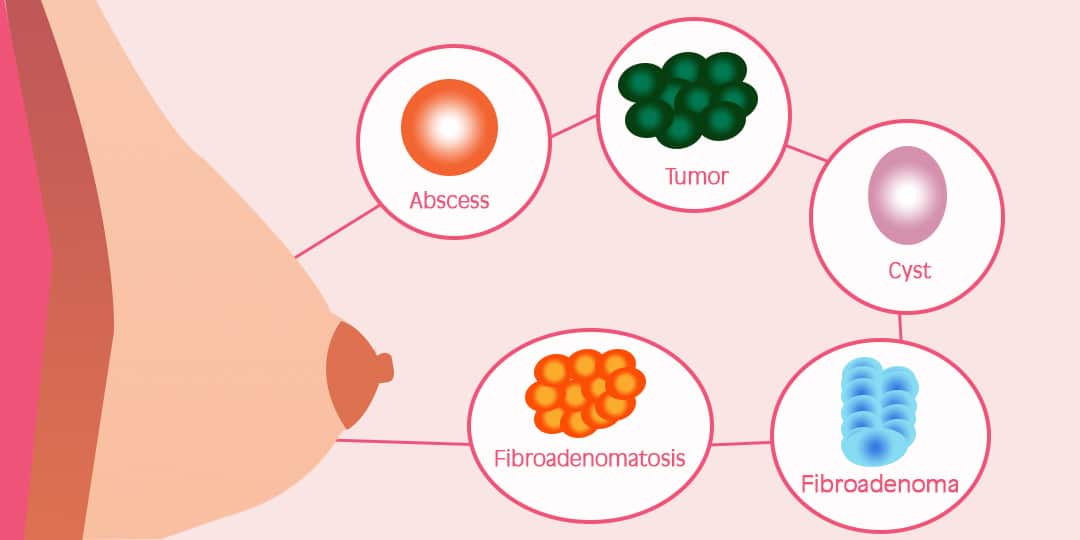Benign Diseases of Breast
#AskPinkRibbon

Apart from breast cancer, there are many other benign breast diseases that often sometimes present with symptoms overlapping with those of breast cancer and this might trigger unnecessary fear and anxiety in many women.
Breast lump is classically seen as a sign of breast cancer and many benign breast diseases often present with lumps as well.
Some of the benign diseases of breast are
-
Breast cysts:
Up to a quarter of breast lumps are fluid-filled cysts. Breast Cysts can be tender and lumpy, but they don’t make you more prone to cancer. Cysts often go away without treatment.
-
Fibroadenomas:
These are the most common noncancerous solid breast tumors found in women ages 15 to 35. Fibroadenomas don’t increase cancer risk and often go away on their own.
-
Fibrocystic breast changes:
Fluctuating hormone levels can make breasts feel lumpy, dense and tender, especially right before menstruation. Women ages 30 to 50 are more likely to experience fibrocystic breast changes which go away without treatment.
-
Hyperplasia:
This condition occurs from an overgrowth of cells that line mammary ducts or glands. A condition called usual hyperplasia doesn’t increase cancer risk and doesn’t require treatment. If you have atypical hyperplasia your healthcare provider may recommend surgically removing affected breast tissue because the condition may make you more prone to breast cancer.
-
Intraductal papilloma:
These small, wart-like growths form inside the mammary duct near the nipple. Intraductal papilloma may cause nipple discharge. The condition most commonly affects women ages 30 to 50. Your risk of cancer goes up if you have five or more papillomas at one time. Surgery can remove these growths and reduce your cancer risk.
-
Mammary duct ectasia:
Menupausal and post menupausal women are more prone to mammary duct ectasia. You may experience an inverted nipple or nipple discharge when swollen, inflamed milk ducts are blocked. Also known as periductal mastitis, this condition doesn’t increase cancer risk. You may need antibiotics if a bacterial infection caused the inflammation and blockage. Otherwise, you don’t need treatment.
-
Traumatic fat necrosis:
These breast lumps form when scar tissue replaces breast tissue that’s been damaged by an injury, surgery or radiation therapy. These lumps don’t raise cancer risk and don’t need treatment.





